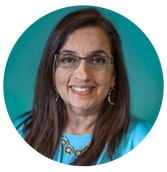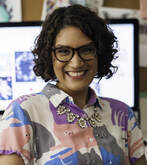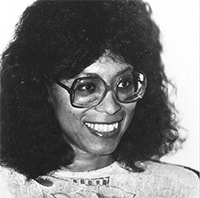By Sara K. Sterner, Lisa Pinkerton, and Mary Ann CappielloCLA Expert Class 2023: Nodes of Literary Connection—How Culturally Diverse Imprints are Building Pathways for More Inclusive and Representative Children’s Literature | Saturday, November 18, 2023 from 5:45 PM - 7:00 PM EST (GCCC Room B-130-132)
In collaboration with Ellen Myrick, President and Chief Marketer, Publisher Spotlight, the 30th annual Expert Class will feature an impressive gathering of authors, illustrators, publishers, and organizations that are influencing the landscape of inclusive representation in children’s literature for readers and creators alike (Menefee & Johnson, 2021; Rosenberg, 2022). Recognizing a continued dearth of diverse books for young readers, especially those written by diverse creators, the demand for more authentic representation in children’s publishing remains an issue (Menefee & Johnson, 2021). In response, small publishers and imprints are shifting the field—creating extended publishing pathways for inclusive books that serve as authentic nodes of literary connection for young readers. This Expert Class explores a movement in the publishing industry working to expand representation in children's literature that has been woefully lacking in the field. It is our goal that participating in the session will help individuals to build nodes of connection that expand or enhance their knowledge of diverse publishers and creators and the books that they publish. Additionally, participants will have opportunities to discover new books and publishers that center representation and highlight lived experiences that have been historically underrepresented and misrepresented in literature for young people. Importantly, the session has the potential to trailblaze new pathways for participants as they work to guide young readers to experience windows, mirrors, and sliding glass doors (Bishop, 1990) that flow out of these literary nodes of connection. This year’s class will provide a unique opportunity for participants to interact directly with publisher/creator teams during the session as they rotate between tables. The session is organized in conversational-style groupings organized around the following focal themes. At each table, speakers will share the focus, vision, and collaborative process that constitute their books and work. In addition to building connections and learning from the experts featured in our Expert Class this year, there will be incredible door prizes and take-aways from the session. Featured Authors
Featured Illustrators
International English Language Books: Featured Publisher
International Translated Books: Featured Publisher
North American Small Presses: Featured Publishers
Outstanding International Books/USBBY
References: Bishop, R. S. (1990, Summer). Mirrors, windows, and sliding glass doors. Perspectives: Choosing and Using Books for the Classroom, 6(3). Menefree, D. L. & Johnson, C.F. (2021). Diverse imprints and the classroom: How publishers are taking up the call to package and promote diverse literature for youth. The ALAN Review, 49(1), 85-89. Rosenberg, R. (2022, August 23). Read and learn: Culturally diverse children’s book publishers and imprints. BOOK RIOT. https://bookriot.com/diverse-childrens-book-publishers/ Sara K. Sterner, California State Polytechnic University, Humboldt, CLA Board Member and Expert Class Committee Co-chair Lisa Pinkerton, The Ohio State University, CLA Board Member and Expert Class Committee Co-chair Mary Ann Cappiello, Lesley University, CLA Board Member and Expert Class Committee Co-chair BY EUN YOUNG YEOM
Using YAL to include emergent bilinguals’ voices
Reading young adult literature (YAL) can be very beneficial for secondary-level students and can operate as a powerful context for discussing complex social issues relevant to students’ lives and current society. Reading and discussing YAL can expand students’ horizons and their conceptions of themselves. The benefits of reading and discussing YAL could also be applied to English learning emergent bilingual adolescents. Recent studies show that leveraging emergent bilinguals’ heritage languages as a scaffold can support English development. However, few educators and researchers discuss how secondary-level emergent bilinguals make sense of the world through reading and discussing YAL written in English, how responding to YAL can be a medium to amplify their voices, and how their heritage languages could be a steppingstone for them to immerse themselves into YAL texts. In many U.S. classrooms that are often dominated by standard English, emergent bilingual adolescents’ perspectives toward YAL and their conceptions of the world can easily be dismissed. One core reason could be that emergent bilinguals’ written and oral utterances, often expressed through developing English mixed with their heritage languages, might look different from standard English expression. However, emergent bilinguals make sense of the world through intermingling their heritage languages and English, a process called translanguaging. Using heritage languages can serve as a bridge for emergent bilinguals to make meaning of YAL texts written in English because translanguaging is a natural way in which bilinguals engage with the world. Through this lens, emergent bilinguals are seen as capable meaning makers with diverse cultural and linguistic repertoires, not as English learners with limited English proficiency who cannot form proper English sentences. Classroom language policy matters Taking advantage of their heritage languages for discussing YAL can open doors for emergent bilingual students to express their opinions easily, and to access their lived experiences and cultural values in relation to the YAL texts they are reading and discussing. For secondary ELA classrooms where many YAL texts are incorporated, allowing emergent bilingual students use of their heritage languages could be a first step toward including more of their voices in discussions. For written responses, opening translanguaging spaces for intermixing heritage languages and English could be another way to honor bilingual students' cultural and linguistic resources and expand their expression options. Ultimately, teachers’ efforts to create a more linguistically inclusive classroom environment can support emergent bilingual students’ active involvement in YAL reading and discussions and can enrich the breadth of ideas and interpretations made available to the classroom community. Teachers’ modeling of blending two languages to make meaning could also reap benefits.
Integrating culturally relevant YAL also matters
In addition to efforts toward linguistic inclusiveness through translanguaging practices, incorporating culturally relevant YAL is equally important. If emergent bilingual students have to sit in a classroom reading a novel written in a second language they have started learning, text analysis will take tremendous energy. If they also have to discuss the novel in the foreign language, they may not be able to fully express their thoughts and feelings, even when formulating insightful ideas in their heads. To make matters worse, if the novel is irrelevant to their lives and cultures, the hardship comes in a combo plate. Incorporating YAL texts that are relevant to emergent bilinguals’ lives is one of the choices teachers can make for emergent bilinguals to feel more included by seeing themselves in the stories they are reading. Emergent bilingual adolescents, who may feel marginalized due to languages, race, and their status as immigrants or refugees, need school to be a space where they feel valued and validated. They are an important part of the colorful fabric of U.S. classrooms, which have increasingly become linguistically diverse. By respecting emergent bilingual adolescents’ bilingual repertoires and honoring their cultural identities through culturally relevant YAL, ELA classrooms can become a welcoming, empowering space for emergent bilingual adolescents to express their feelings, thoughts, and perspectives. RESOURCES
Translanguaging Guides | CUNY-NYSIEB Recommended sites for finding culturally relevant YAL for emergent bilingual adolescents Immigration and refugee experiences:
Asian immigrant experiences:
Latinx immigrant experiences African immigrant experiences: YAL about immigrants from the Middle East or Middle Eastern characters:
Eun Young Yeom was an in-service middle/high school English teacher in South Korea for 12 years, and is a doctoral student in the Department of Language and Literacy Education at the University of Georgia. Her research revolves around transnational emergent bilinguals’ language practices and their responses to young adult literature.
BY WENDY STEPHENSEditorial Note: This post is the first in a 2-part series by Wendy Stephens discussing the rich landscape of book awards announced over the winter months. In this first post, Wendy focuses on ALSC awards and awards by ALA affiliates recognizing books for children or books for a wide spectrum of age groups. The second post, which will be published next week, will present awards for YA literature administered by YALSA, as well as several other notable awards. When we talk about budgeting for materials, I always advise my school librarian candidates to be sure to save some funding for January. No matter how good their ongoing collection development has been throughout the year, there are always some surprises when the American Library Association's Youth Media Awards (YMAs) roll around, and they'll want to be able to share the latest and best in children's literature with their readers. These are the books that will keep their collections up-to-date and relevant. From our own childhoods, we always remember the "books with the medals" -- particularly the John Newbery for the most outstanding contribution to children's literature and the Randolph Caldecott for the most distinguished American picture book for children. These books become must-buys and remain touchstones for young readers. In 2021, Newbery is celebrating its one hundredth year. Some past winners and honor books are very much a product of their time, and many of those once held in high esteem lack appeal today. For those of us working with children and with children's literature, the new books honored at Midwinter offer opportunities to revisit curriculum, update mentor texts, and build Lesesneian "reading ladders." Each award committee has its own particular award criteria and guidelines for eligibility, and its own process and confidentiality norms. Every year, the YMAs seems to be peppered with small surprises. Does New Kid winning the Newbery means graphic novels are finally canonical? Is Neil Gaiman an American? What about all the 2015 Caldecott honors, including the controversial That One Summer? Did the Newbery designation of The Last Stop on Market Street mean you can validate using picture books with older students? How does Cozbi A. Cabrera's much-honored art work resonate at this historical moment? In Horn Book and School Library Journal, Newbery, Caldecott and Printz contenders are tracked throughout the year in blogs like Someday My Printz Will Come, Heavy Medal, and Calling Caldecott. Other independent sites like Guessing Geisel, founded by Amy Seto Forrester are equally devoted to award prediction. Among librarians and readers, there are lots of armchair quarterbacks, and conducting mock Newbery and Caldecotts, either among groups of professionals or with children, have become almost a cottage industry. There are numerous how-tos on that subject, from reputable sources like The Nerdy Book Club and BookPage. But there are numerous other awards announced at ALA Midwinter almost simultaneously that deserve your attention, too. Among the Association for Library Services for Children (ALSC) awards are: the Robert F. Sibert Medal, the Mildred L. Batchelder Award, the Geisel Award, the Excellence in Early Learning Digital Media Award, and the Children's Literature Legacy Award.
Aside from the award winners, each year annual ALSC Children's Notable Lists are produced in categories for Notable Children's Recordings, Notable Children's Digital Media, and Notable Children's Books. If you want to see the machinations behind the designation, those discussions are open to the public this year via virtual meeting links. Outside of ALSC, many of ALA’s affiliates have their own honors for children's literature. These include the Ethnic and Multicultural Information Exchange Round Table (EMIERT) which sponsors the Coretta Scott King Book Awards; the Association of Jewish Libraries which sponsors the Sydney Taylor Book Awards; and REFORMA: The National Association to Promote Library and Information Services to Latinos and the Spanish-Speaking which sponsors the Pura Belpré awards. In addition to these affiliates, others such as the Asian/Pacific American Librarian Association and the American Indian Library Association also present awards. The awards are always evolving to reflect the abundance of literature available for young people. Like the Association of Jewish Libraries and the Asian/Pacific American Librarian Association awards, the American Indian Youth Literature Awards were first added to the televised YMA event in 2018. And this year was the first year for inclusion for a new Young Adult category for the Pura Belpré. Two awards of particular significance are the Stonewall Book Award – Mike Morgan and Larry Romans Children’s and Young Adult Literature Awards are given annually to English-language works found to be of exceptional merit for children or teens relating to the gay, lesbian, bisexual and transgender experience, and the Schneider Family Book Awards, honoring authors or illustrators for the artistic expression of the disability experience for child and adolescent audiences, with recipients in three categories: younger children, middle grades, and teens.
Wendy Stephens is an Assistant Professor and the Library Media Program Chair at Jacksonville State University. BY EVELYN B. FREEMAN
International books open the world to your students. During this time when children everywhere are experiencing the global pandemic, sharing and experiencing stories across cultures help guide young readers towards realizing the similarities that unite us while recognizing and valuing our unique differences.
Deanna Day-Wiff, a member of the 2020 OIB Committee, who teaches at Washington State University-Vancouver Campus, has shared books with her teacher education students. Deanna describes examples of how she used two of the books from the 2020 list.
Deanna writes:
USBBY is an organization devoted to building bridges of international understanding through children’s and young adult books. It serves as the U.S. national section of the International Board on Books for Young People, with headquarters in Basel, Switzerland. The National Council of Teachers of English is a patron organization of USBBY and appoints two NCTE members, who are usually active members of CLA, to the USBBY Board. To learn more about the organizition, visit USBBY's website. Evelyn B. Freeman is Professor Emerita at The Ohio State University and a former CLA President. |
Authors:
|
CLA
About CLA
|
Journal of Children's Literature
Write for JCL
|
ResourcesCLA-sponsored NCTE Position Statements
|
Members-Only Content
CLA Video Library
|
© COPYRIGHT 2018.
ALL RIGHTS RESERVED |









































 RSS Feed
RSS Feed